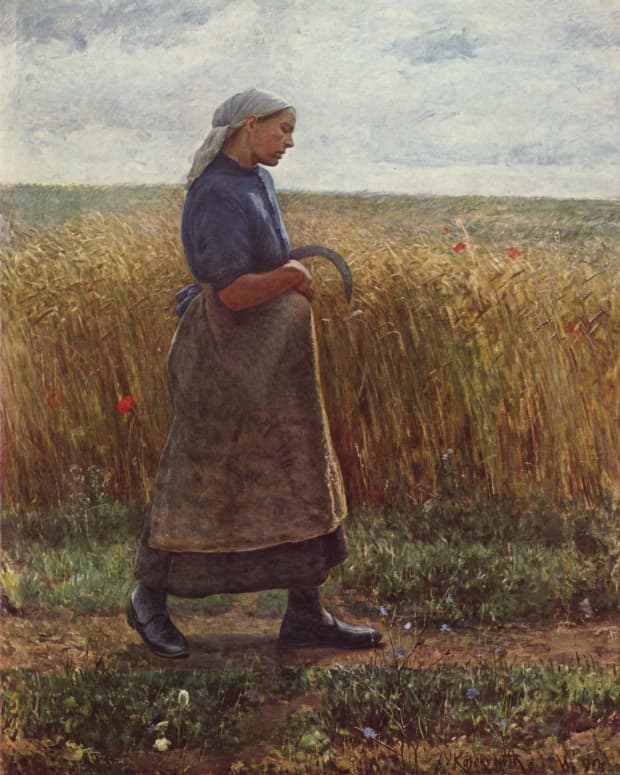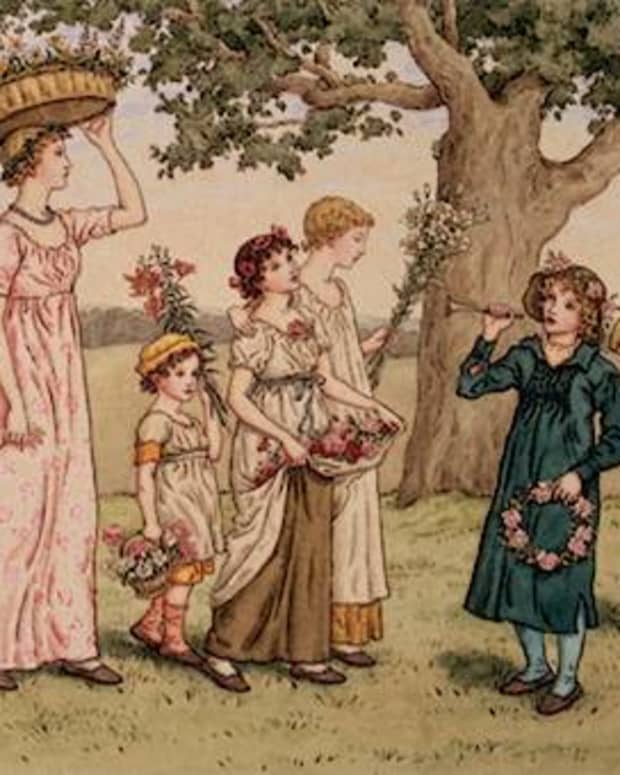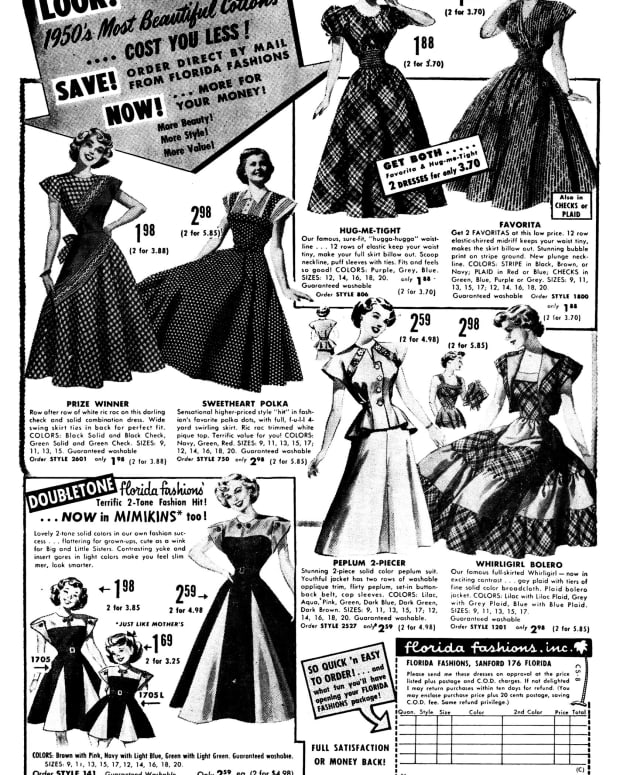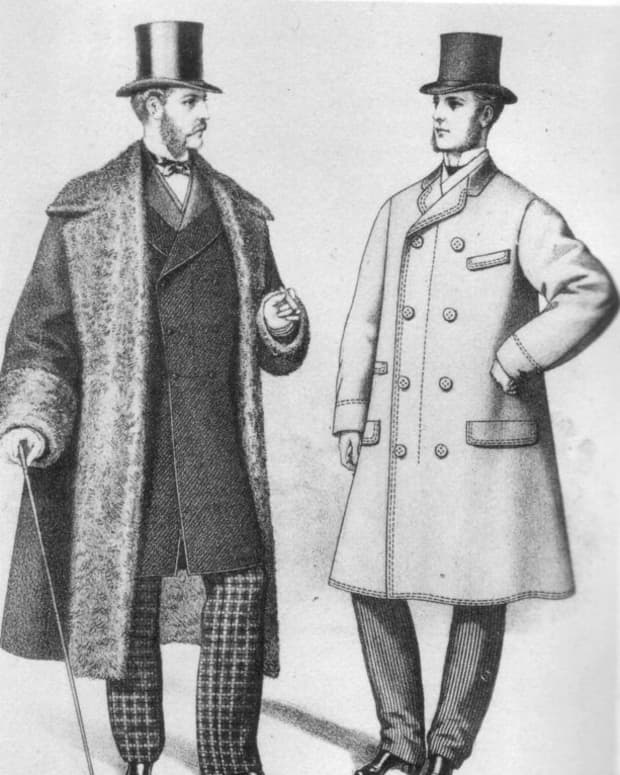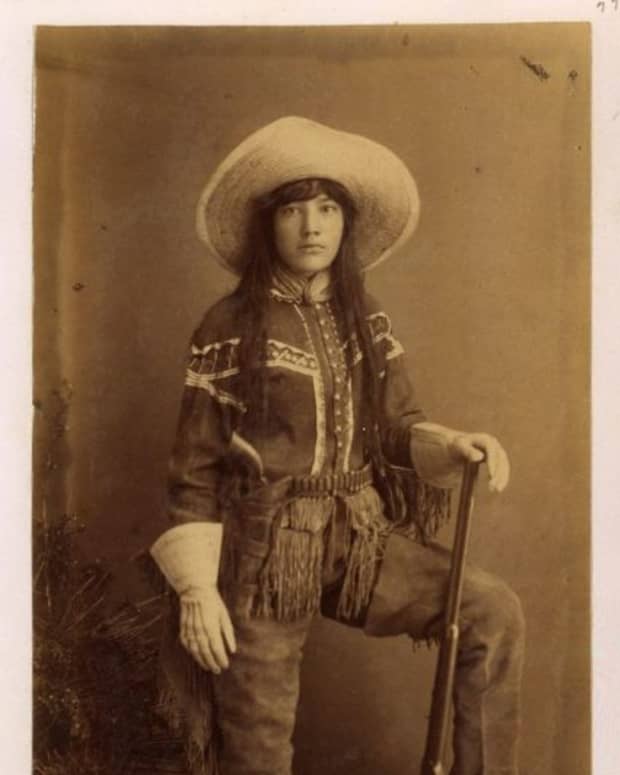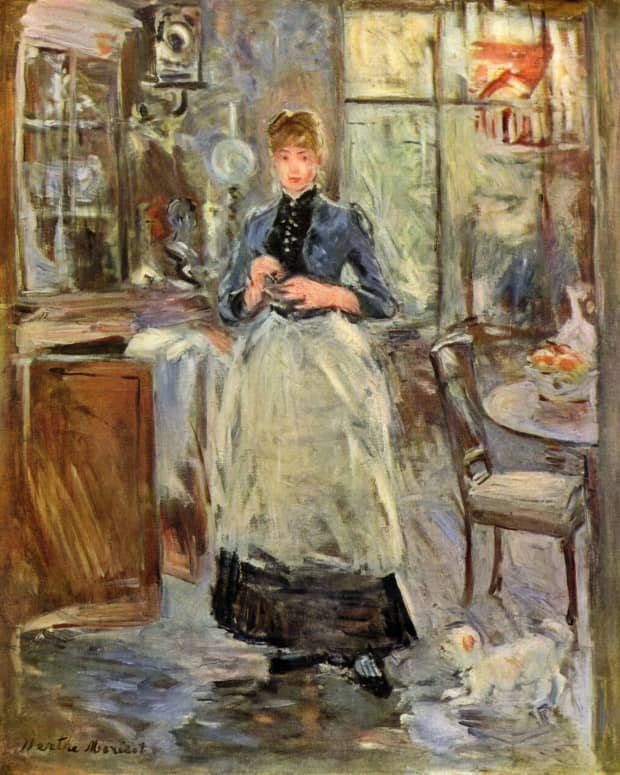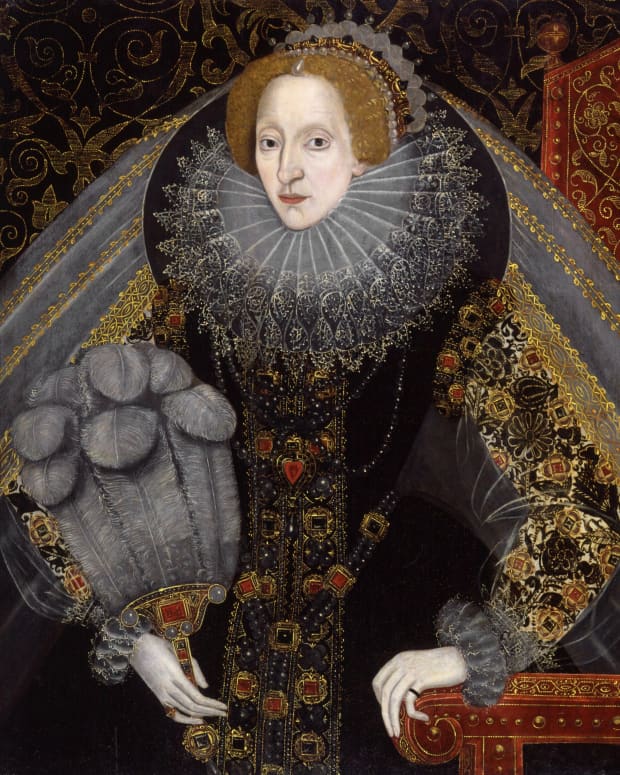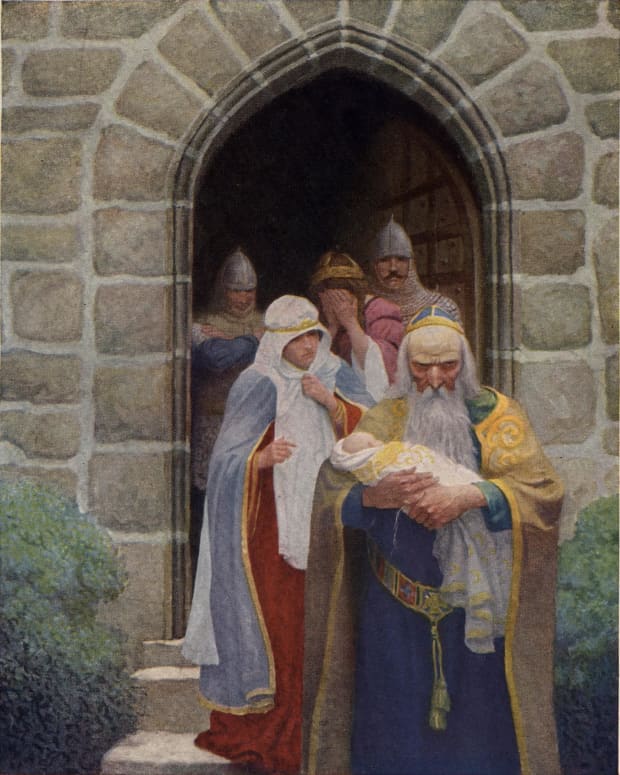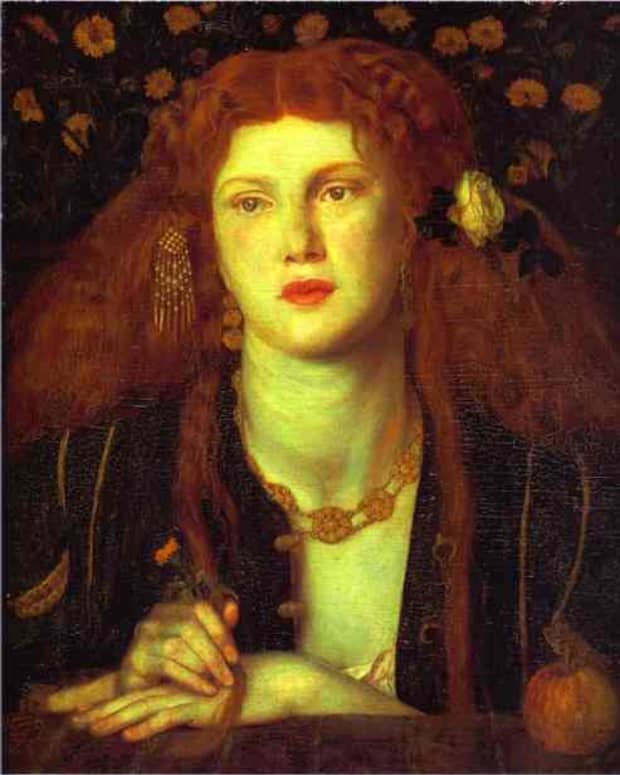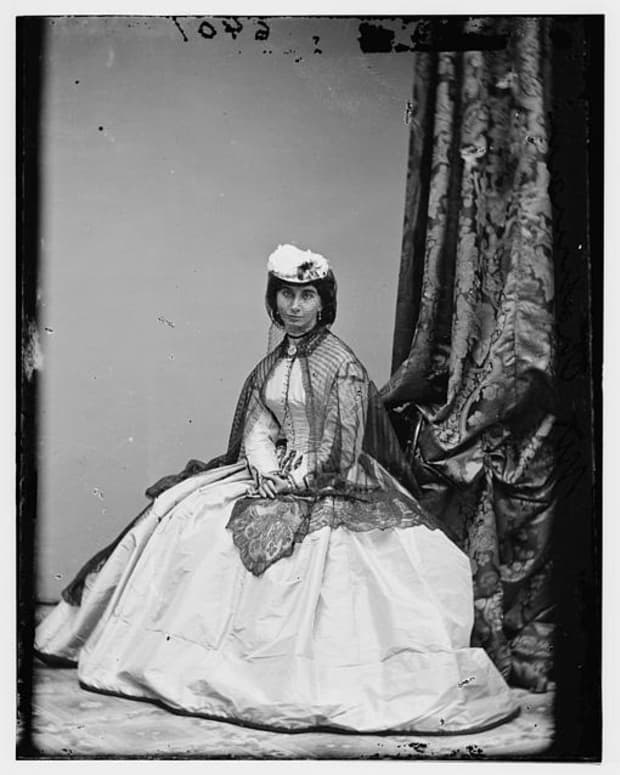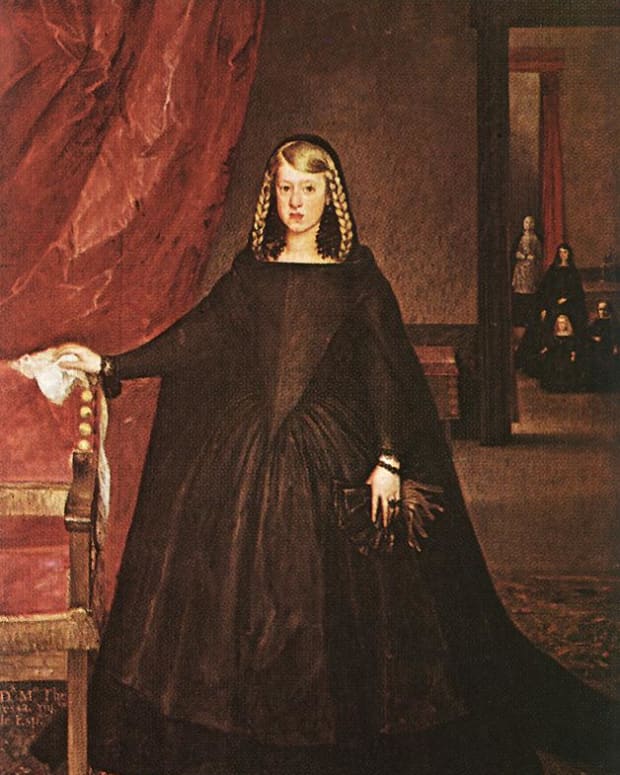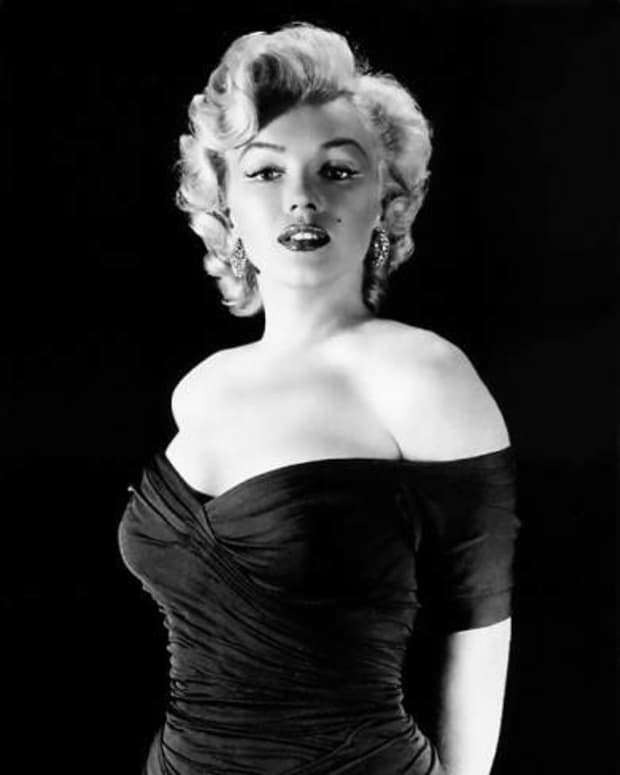Historical Irish Clothing
My heritage is mostly Irish. Researching traditional Irish clothing is a way for me to explore my family's history.



Irish Clothing History Misconceptions and Mysteries
Surprisingly, traditional Irish clothing is a bit of a mystery. Few historical accounts of clothing styles survive and the garments themselves were not typically preserved for study. All we can say for certain is that garments were primarily made of wool and linen (and leather, less frequently) and that historians and archaeologists believe that most Irish people wore simple, tunic-style garments, heavy wool mantles, and linen shirts.1
However, contrary to popular belief, it is fairly certain that the Irish did not wear kilts like the Scottish. In fact, most historians and scholars agree that neither the kilt nor the tartan pattern originated in Ireland, and that the kilt was never a part of the Irish wardrobe at any point in history.2 That's right, ladies and gentleman. There is no such thing as an Irish kilt.
Sources of Information on Irish Clothing
As I mentioned, Irish traditional clothing remains a bit of a mystery. However, there are several sources that can help us piece together information and discover a general idea of what the Irish probably wore throughout history.
The Moy Bog Gown
One of the ways in which we can piece together information about Irish garments is through the archaeological record. The Moy Bog Gown, for example, is an archaeological discovery that proved to be a valuable source of information on historical Irish dress.
The Moy Bog Garment is a fragment of a dress found on a decomposed body in the Moy Bog of County Clare, Ireland. The body was found by a local farmer in 1931, and the remains of the garment were sent to the National Museum of Ireland. A later analysis of the fabric indicated that it was a rough wool twill that may originally have been brown in color. It is believed to date from the early 1300s, making it about 700 years old.3
Though only fragments of the gown remain, a few details can still be seen clearly: it consists of a front-buttoning bodice, a skirt that may have been ankle or calf-length, a rounded neckline, and fitted sleeves that were probably long.
- Reconstruction of the Moy Gown
To learn more about the Moy Gown, check out Kass McGann's page. She was in close contact with the National Museum of Ireland regarding the garment and created a reconstruction using her own photos and measurements of the original.
Moy Gown Sewing Pattern - Create Your Own Reproduction
What About Traditional Medieval Irish Shoes?
Typical Irish shoes from the Early Medieval Period onward looked like a simplified version of the Irish dance shoes pictured on the right. They were made of leather with an adjustable leather lace (which had to be replaced often) holding them closed.
How do we know what the shoes looked like? Much like the Moy Gown, surviving examples have been found in Irish bogs, like the discovery of the Coolatoor Bog Shoe linked below.
The Coolatoor Bog Shoe
- An Early Medieval Shoe from Co. Westmeath
Early Medieval shoe discovered in the 1950s by turf-cutters working at Coolatoor Bog in County Westmeath.
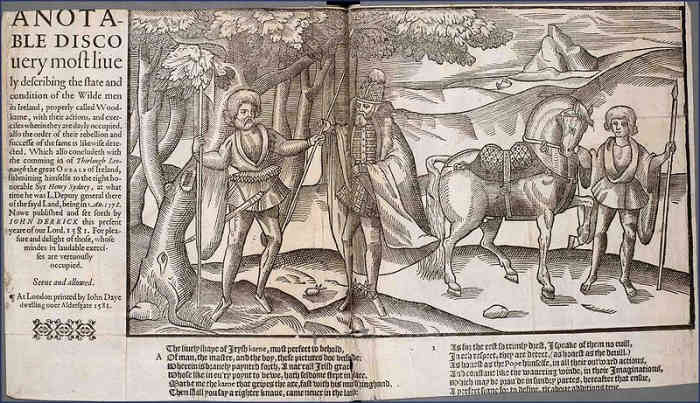
An Irish chieftain in full dress uniform (center). From "The Image of Irelande" by John Derrick, 1581.
The Image of Irelande
We can also gain information on Irish-style clothing from paintings and other forms of artwork. The Image of Irelande, with a Discoverie of Woodkarne is an excellent example.
The book itself was concerned with defending the English right to conquer and rule Ireland, but the woodcut illustrations and text descriptions provide historically useful information on Irish culture (including apparel) despite the anti-Irish political message and negative commentary on Irish customs.
The Image of Irelande was printed in 1581 by John Derricke, an employee of Queen Elizabeth I's Lord Deputy of Ireland, Sir Henry Sidney. The Lord Deputy of Ireland was the English Queen's representative who acted as head of the Irish state after the Tudor conquest, which accounts for the pro-imperialist anti-Irish sentiments expressed in the book.
The Image of Irelande is a useful historical reference because John Derricke lived in Ireland while he completed the book, making him an eyewitness of the customs and events he describes. His work contains a description of the history of the relationship between Ireland and the English crown and also includes details on Irish customs, religion, and clothing, however negatively portrayed.
From the book's woodcut illustrations, we can see depictions of some Irish people in their traditional clothing of the late 16th century. Since Derricke oversaw the creation of the images, the garments may be fairly accurate portrayals of styles he witnessed himself during his time in Ireland.

The Irish chief of the Mac Sweynes seated at dinner with a bard and harper performing. From "The Image of Irelande" by John Derrick, 1581.
Lucas de Heere's Paintings of Irish Men and Women
Another great source of information on Irish traditional clothing is artwork. The painting of Irish men and women by Lucas de Heere (right) is a great example.
Read More From Bellatory
The 1575 watercolor painting by Dutch artist Lucas de Heere depicts a group of wealthy elite Irish men and women. The two women are wearing English-style clothing and the Irish Kern (soldier) is in a traditional dress uniform.4 By the late 16th century, many of the wealthier Irish people were adopting English fashions and clothing styles.
A (Very) General Summary of Irish Apparel
From these sources we can see that tunics and mantles do indeed appear to be the primary mode of traditional Irish dress. Garment fragments like the Moy Gown let us know that buttons were in use and that wool was common. Paintings and woodcuts like those of Derricke and de Heere indicate that military and courtly dress consisted of loose tunics with varying levels of decoration.
From what we know of traditional Irish clothing, it seems fairly austere and simple, but warm, practical, and durable. If paintings like de Heere's are to be believed, yellow and tan were fairly common garment colors, and we know from the Moy Gown that brown was used as well.
References
- Foster, Robert Fitzroy. The Oxford History of Ireland. Oxford University Press: 1989.
- Newsome, Matthew and Todd Wilkinson. "Hibernian Dress, Caledonian Custom: A Brief history of Irish Kilts & Tartans."
- McGann, Kass. "The Moy Gown — An Irish Medieval Gown."
- Lennon, Colm. Luxury and Austerity. University College Dublin Press: 1999.
About Me
Most of my heritage is Irish (with a quarter of German ancestry thrown in the mix) but as a 5th generation American, I don't really know that much about my Irish roots. So, researching traditional Irish clothing was a fun way to explore my history and hopefully provide some useful information for others wanting to do the same.
Comments
Remingtons on March 05, 2019:
We want to thank you so much for your wonderful post! We learned so much. My daughter had a school assignment and we learned a lot from your amazing article. We had so much fun reading!
Tei Rooney on December 08, 2018:
Thank you VERY much for your article!
My daughter was given an assignment in school, to do a doll dressed in a "traditional heritage costume" of each one's own heritage. If multiple, they could choose from their multiple. We have Irish, German mostly, so Irish was the chosen. LOL We would have thought with as common as Irish ancestry is in the US alone, that it would have been easy to find an incredible amount of images and info about the clothing alone. Wow was I wrong!! This was a wealth of info, and help!
Alastar Packer from North Carolina on January 29, 2014:
An interest here in peat/bog bodies, clothing from those times, well, everything connected to the bodies and their artifacts made this an enjoyable and instructive read. Thanks, Christy!
Philip Wall from Dublin, Ireland on April 07, 2013:
An interesting article. I didn't know Irish men only adopted the tradition of kilts as a sense of Nationalism recently. This article explains more about it. http://wiki.answers.com/Q/Why_did_Irish_men_start_...
Steve Anselmo from Thunder Bay on April 04, 2013:
Great article Christy! My fiancée is also Irish and I'm going to refer her to this article as I'm sure she would be very interested in her roots as well.
mr-veg from Colorado United States on March 25, 2013:
Great article, delight to read !! Good one christy ..
Suzanne Ridgeway from Dublin, Ireland on March 25, 2013:
Hi Christy,
What an interesting read on Irish garments. As an Irish woman the history made fascinating reading I really enjoyed! Well done on the research.







